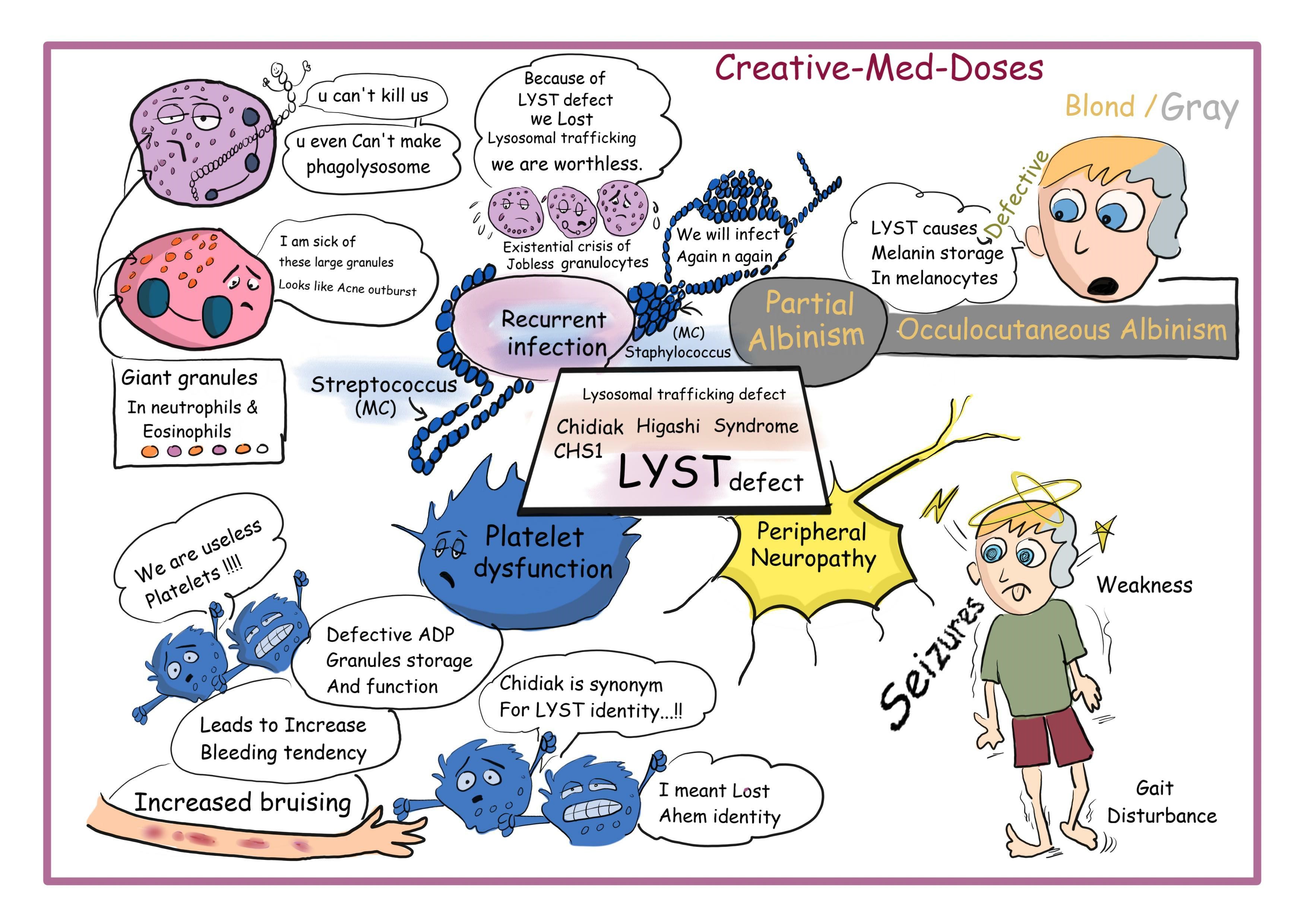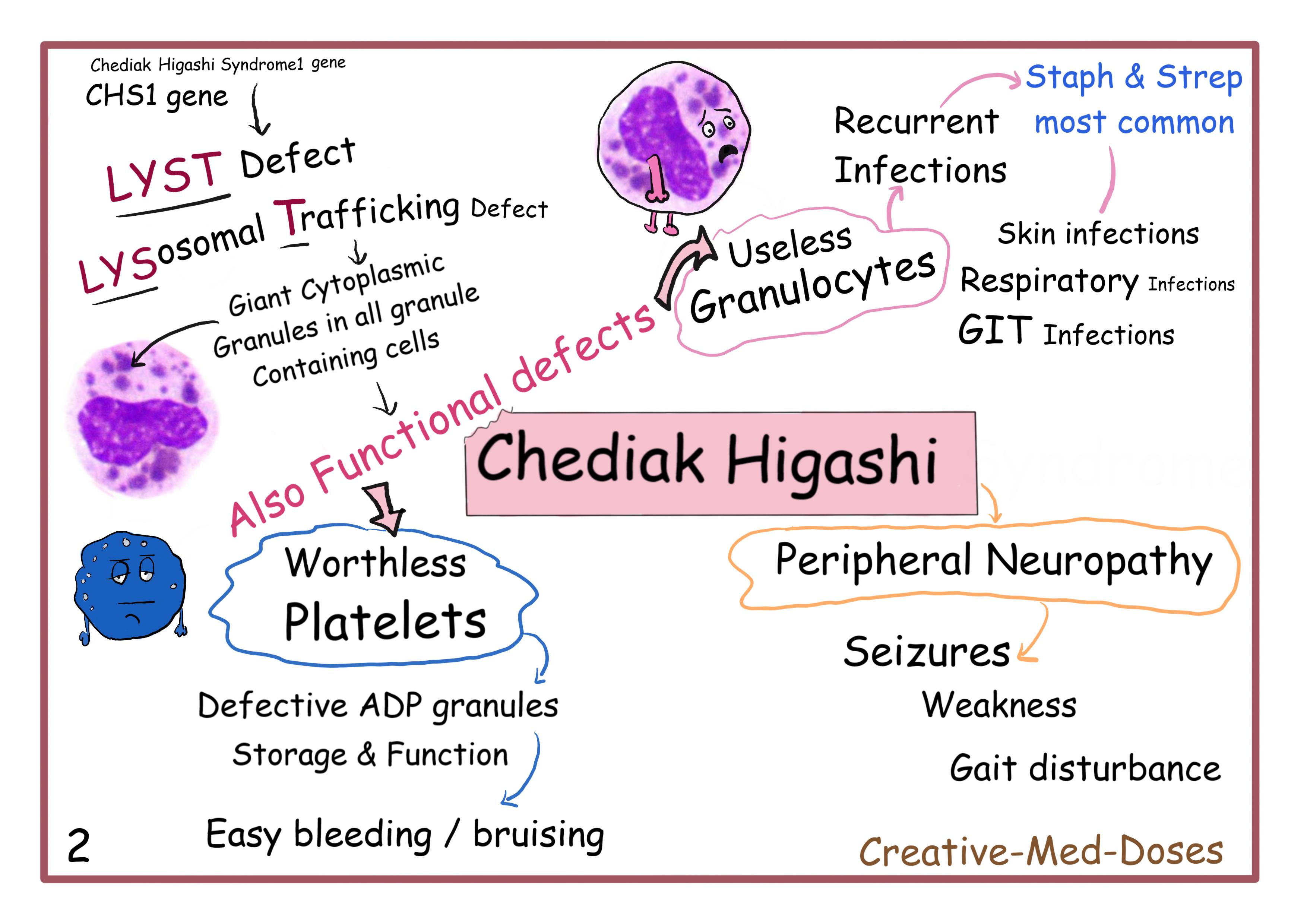Chediak-Higashi syndrome visual maps
Chediak-Higashi syndrome is a rare autosomal recessive disorder characterized clinically by partial oculocutaneous albinism due to defects in melanin granules and recurrent pyogenic bacterial infections due to abnormalities in granulocytes. The basic defect is in microtubules resulting in fusion of lysosomal granules. All white blood cells contain abnormally giant granules.
...

...

...
What is defective
- defect in lysosomal trafficking regulator gene LYST
- microtubule dysfunction with failure of phagolysosome formation
- defective secretion of lysosomal enzymes
- defective melanization of melanosomes.
Symptoms
- In presence of abnormal granules there is defective and delayed release of bactericidal lysosomal proteins leading to poor ability to fight bacterial infections. Especially recurrent pyogenic infections, mainly of the skin and soft tissue. Staphylococcus and Streptococcus are most common bacteria.
- Partial albinism, hypopigmentation of skin, eyes, and hair, photosensitivity, infiltrative lymphohistiocytosis because of defective melanization of melanosomes.
- Progressive neurodegeneration, peripheral neuropathy, pancytopenia, easy bruising.
- Easy bleeding due to mild coagulation defects.
Diagnosis can be made with light microscopy of peripheral blood smear, eosinophilic peroxidase-positive giant granules in neutrophils and platelets are seen.
Treatment- bone marrow transplantation is the only cure.
Further reading https://emedicine.medscape.com/article/1114607-overview
Revision for today https://creativemeddoses.com/topics-list/lyme-disease/